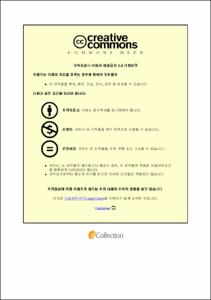근골격계 장애를 가진 산재근로자의 외상후 스트레스 극복 과정
- Issued Date
- 2019-08
- Abstract
- This study identified post-traumatic stress coping process for occupational injuried workers with musculoskeletal disorders with an in-depth and comprehensive approach in order to help assist in building a concrete theory that could explain the terms and consequences of the process. The study used the grounded theory methodology, PDS-K and K-PTGI were measured and the total of 15 participants after 6 months of injury or injury, after fracture and musculoskeletal damage were divided into three groups according to the PDS-K score by individual interviews during the course of approximately 3 months, which lasted from November, 2018 to February, 2019. The questions used in the individual interviews included the process of experiencing post-traumatic stress coping, phenomenon, coping strategies and contextual/interventing conditions. The qualitative data from transcribed notes and field notes were analyzed through open coding, data analysis, process analysis, and category integration according to the methods suggested by Corbin and Strauss (2008, 2015). The results of the research drew 13 categories, 28 subcategories, and 58 concepts. The research indicated that the core category of the post-traumatic stress coping experience was ‘moving in the dark toward the light’. As a result, the central phenomenon was ‘life was trapped in darkness due to industrial accidents’. Moreover, the conditions affecting the early and mid-term experience of the study participants in the initial situation were ‘atrophied social relations’, ‘limitation of activity for livelihood’, ‘prejudice and stigma against disability’ and ‘the wall of industrial accident compensation support’. The conditions affecting the mid-and late-term were ‘support of family and people’ and ‘industrial accident compensation support’. The action/interaction strategies were ‘accepting my appearance with disabilities’, ‘seeking comfort and enjoyment in everyday life’, ‘focusing on rehabilitation with a will to overcome’, and ‘challenging new jobs and jobs’. In addition, as a result of the action/interaction strategy, ‘resting in a new life’ and ‘being trapped in despair’ was derived. Post-traumatic stress coping process for occupational injuried workers with musculoskeletal disorders was approached from a concept of a process, and the study identified the stages of dark depressed period, escape struggle, and new life-setting stage. In conclusion, post-traumatic stress coping process for occupational injuried workers with musculoskeletal disorders can be comprehended as a process of ‘moving in the dark toward the light’. On the basis of the research results, this study is expected to provide valuable theoretical basis that could help to overcome post-traumatic stress in industrial workers and adapt to new life.
본 연구는 산재근로자의 외상후 스트레스 극복 경험 과정을 그들의 관점에서 파악하여 이 과정에 관계되는 조건 및 도달하게 되는 결과를 설명할 수 있는 실체이론을 구축하기 위해 수행되었다. 본 연구는 근거이론 연구방법과 개별적 심층면담법에 의한 연구로서 자료수집은 2018년 11월부터 2019년 2월까지 약 3개월 동안 산재 기간이 6개월 이상, 골절 및 근골격계의 손상을 입은 후 장애를 갖게 된 자 중 PDS-K와 K-PTGI를 측정하여 PDS-K 평가점수에 따라 총 15명을 3개의 집단으로 나누어 수집하였다. 개별적 면담에서는 연구 참여자의 외상후 스트레스 극복 경험 과정, 현상과 이에 대한 대처 전략, 그리고 이에 영향을 주는 상황적 맥락 등을 확인하기위한 질문이 사용되었다. 전사된 노트와 현장 노트로부터 수집된 질적 자료는 Corbin과 Strauss (2008, 2015)가 제시한 방법에 따라 개방코딩, 맥락에 대한 자료 분석 및 과정 분석, 범주 통합의 단계를 거쳐 분석하였다. 그 결과 총 58개의 개념, 28개의 하위범주 및 13개의 범주로 범주화할 수 있었다. 본 연구의 분석 결과 산재근로자의 외상후 스트레스 극복 과정의 핵심범주는 ‘암흑 속에서 빛 따라 나아감’으로 나타났고, 현상은 ‘산재로 인해 삶이 암흑 속에 갇힘’이었다. 초기상황에서 연구 참여자의 초기와 중기 경험에 영향을 주는 조건은 ‘위축된 사회적 관계’, ‘생계를 위한 활동의 제한’, ‘장애에 대한 편견과 낙인’, ‘산재보상 지원의 높은 장벽’이었다. 또한 근골격계 장애를 가진 산재근로자의 외상후 스트레스 극복 과정에서 중·후기에 영향을 주는 영향을 주는 중재적 조건은 ‘가족과 주변사람들의 지지’, ‘산업재해보상 지원’으로 나타났다. 행위/상호작용 전략은 ‘장애를 가진 나를 받아들임’, ‘일상에서 위안과 즐거움을 찾음’, ‘극복의지로 재활에 집중함’, ‘새 출발을 위한 일과 직업에 도전함’이 도출되었다. 그리고 이러한 행위/상호작용 전략의 결과로 ‘새로운 삶에 안착함’, ‘절망 속에 갇혀 있음’이 도출되었다. 근골격계 장애를 가진 산재근로자의 외상후 스트레스 극복 과정은 과정적 개념으로 접근하여 암흑 속 방황기, 탈출 분투기, 새로운 삶 정착기 단계로 확인하였다. 따라서, 근골격계 장애를 가진 산재근로자의 외상후 스트레스 극복 과정은 ‘암흑 속에서 빛 따라 나아감’으로 이해할 수 있다. 이상의 결과를 토대로 근골격계 장애를 가진 산재근로자가 외상후 스트레스를 극복하고 새로운 삶에 대한 적응과 안착해 나가는데 도움이 되는 이론적 기반을 마련할 수 있을 것으로 기대된다.
- Alternative Title
- Post-traumatic stress coping process for occupational injuried workers with musculoskeletal disorders
- Awarded Date
- 2019-08
- Degree
- 박사
- Citation
- 한정원. (201908). 근골격계 장애를 가진 산재근로자의 외상후 스트레스 극복 과정.
- Type
- Thesis
- Source
- http://dcollection.kmu.ac.kr/common/orgView/000000118060
- Appears in Collections:
- 2. College of Nursing (간호대학) > 박사
- 파일 목록
-
-
Download
 THESIS-Nursing-2019-035.pdf
기타 데이터 / 668.03 kB / Adobe PDF
THESIS-Nursing-2019-035.pdf
기타 데이터 / 668.03 kB / Adobe PDF
-
Items in Repository are protected by copyright, with all rights reserved, unless otherwise indicated.